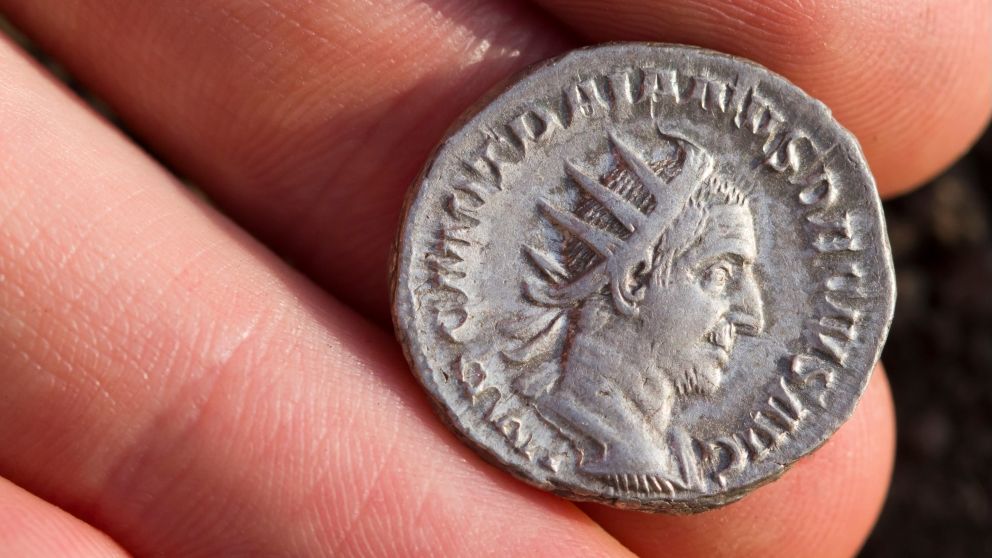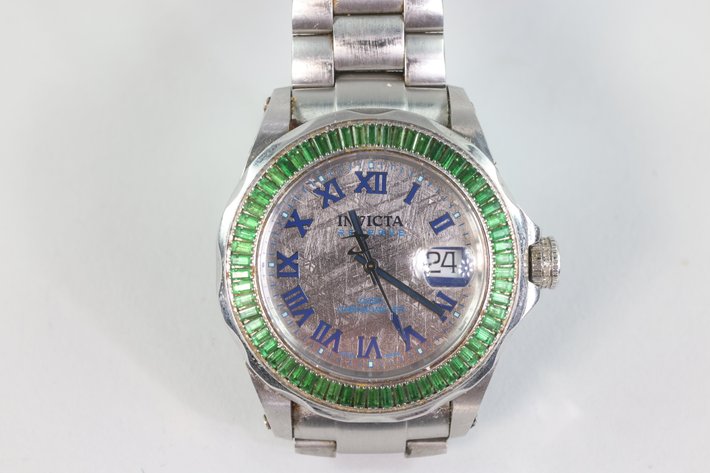
From the bustling marketplaces of ancient Athens to the sacred temples of Tyre, coins have been more than just a medium of exchange. They are the storytellers of bygone eras, emblazoned with symbols of power, faith, and artistry, silently echoing the triumphs, beliefs, and aspirations of civilizations that once flourished. As these coins journeyed through hands, they bore witness to evolving empires, fierce battles, spiritual awakenings, and the everyday lives of people who walked the earth millennia ago.
Delving into the tales of legendary ancient currencies offers more than a glimpse into economic practices; it's an exploration of cultural narratives, political ambitions, and divine mythologies. Each coin, in its intricate design and material, encapsulates a unique story waiting to be unraveled. As we embark on this numismatic journey, let's rediscover the world through the lens of these metallic narrators, each shimmering piece a key to realms long past.
Charon’s Obol: Crossing the River Styx
In the heart of ancient Greece, where myths and reality often intertwined, the concept of death was deeply connected to the realm of the supernatural. The River Styx, dark and foreboding, served as a boundary between the world of the living and the domain of Hades. But to traverse its depths and reach the afterlife, a toll was needed: the obol. This humble coin, usually placed in the mouth or over the eyes of the deceased, was not just an age-old ritual, but a testament to the profound spiritual beliefs of the Greeks. It represented safe passage, ensuring that souls weren’t left to wander aimlessly, but rather received by Charon, the enigmatic ferryman of the underworld.
Archaeological excavations across various burial sites in Greece and its territories often reveal these coins, telling tales of an age when mortal life was deeply entwined with the divine. The presence of the obol goes beyond just economic value; it speaks of a civilization's reverence for the afterlife, the desire for peace in death, and the hope that the departed would find their place among the legends and deities of their myths.
Athenian Owl Tetradrachm: The Coin that Fueled an Empire
At the pinnacle of its power, Athens was more than a city-state; it was a beacon of culture, philosophy, and commerce. Its influence extended far beyond its famed walls and into the corners of the ancient Mediterranean world. Central to this was the Athenian Owl Tetradrachm, a silver coin recognized as much for its beauty as its ubiquity. On one side, the serene face of Athena, the city’s patron goddess, and on the reverse, her sacred owl, a symbol of wisdom and vigilance. This wasn't just currency; it was a statement of Athenian pride, a tangible representation of the city’s grandeur and its democratic ideals.
As the primary trade coin of its era, the Tetradrachm facilitated commerce across diverse regions, from Egypt to the Black Sea. But its reach was not limited to mere economic transactions. Every imprint of the owl on these coins was a soft whisper of Athenian culture, of its art, its values, and its indomitable spirit. When merchants, scholars, or travelers from distant lands held the Tetradrachm, they weren't just holding a piece of silver; they were touching a fragment of Athens, the cradle of Western civilization.
The Shekel of Tyre: Sacred Temple Tribute
In the ancient lands where the Mediterranean meets the deserts, where history interlaces with faith, the Shekel of Tyre stood as a potent symbol. Minted in the Phoenician city of Tyre, this silver coin became renowned not just for its craftsmanship but also for its religious significance. With the effigy of Melqart, the chief deity of the city, it bore the weight of spiritual duty and ritual. The Tyrian shekel's high silver purity made it the chosen currency for religious offerings in the grand Temple of Jerusalem, reflecting its profound importance in the region's spiritual practices.
But perhaps its most compelling chapter lies in the narratives of the New Testament. Historians and theologians often associate this coin with the infamous 'thirty pieces of silver' – the price for Judas Iscariot's betrayal of Jesus Christ. Through such connections, the Shekel of Tyre transcends its economic role, becoming a piece of a much larger tale, one of faith, treachery, and redemption. Whenever we encounter this coin today, it stands as a silent sentinel to pivotal moments in religious history, where human choices shaped the course of faith for generations to come.
The Denarius: Daily Wage in Ancient Rome
The sprawling Roman Empire, in all its might and glory, was underpinned by its intricate system of trade, taxes, and tributes. Central to this vast economic network was the silver denarius, a coin that became synonymous with daily life in Rome. From the bustling markets of the Forum to the grand amphitheaters, the denarius exchanged hands, enabling commerce, patronage, and prosperity. It bore the imprints of emperors, symbols of divine favor, and declarations of military triumphs, acting as a circulating canvas of Roman propaganda and pride.
Yet, its significance extends beyond mere economic transactions. The denarius's imprint in history is further cemented by its biblical references, particularly in the New Testament. In the well-known narrative of "Render unto Caesar," it becomes a tool for a profound lesson on duty and faith. Such intersections of the denarius with historical and religious events showcase its multifaceted role. For those living under the Pax Romana, this coin was not just a means of trade; it was a daily reminder of Rome's dominance, its values, and its intricate relationship with the divine.
The Spade Money of Ancient China: A Tool Turned Tender
In the fertile plains and bustling cities of ancient China, before standardized round coins found their place, there was spade money. These intriguing, spade-shaped bronze artifacts stand as testament to China's innovative approach to currency. Originating during the Zhou dynasty, spade money was, quite literally, modeled after small spades used for farming. In a society where agriculture was paramount, transforming this vital tool into a medium of exchange symbolized the profound connection between work, value, and sustenance.
Yet, as dynasties rose and fell, spade money evolved in design and significance. From simple inscriptions indicating their value to more elaborate markings signifying regional origins or royal decrees, these pieces became a canvas for China's ever-evolving socio-economic narrative. Today, as we trace our fingers over the worn edges of these ancient artifacts, we are reminded of China's rich tapestry of history – of its early endeavors in economic systems, its reverence for agriculture, and its journey from the simple soil-tilling spade to the vast imperial treasuries.
The Gold Stater of Lydia: Birth of Coinage
Long before the empires of Rome, Greece, or China standardized their coins, a revolutionary shift in commerce was brewing in the kingdom of Lydia, located in what is now modern-day Turkey. Here, in the shimmering rivers laden with gold and silver, the concept of coinage was born. The Lydian gold stater, often recognized as one of the world's earliest coins, heralded a new era in trade, economy, and human interaction. Struck with simple, yet distinctive designs, these electrum (a blend of gold and silver) coins were a testament to Lydia's wealth and its pioneering spirit.
Beyond its intrinsic value, the advent of the stater signaled the dawn of a new economic age. No longer were trade and tributes confined to the ambiguities of barter; a standardized medium of exchange was now in play, setting the stage for complex markets, financial systems, and global commerce. When we look at the Lydian stater today, it's more than just a piece of metal. It's a symbol of human ingenuity, a spark that ignited millennia of economic exploration and shaped the course of civilizations across continents.
The Celtic Stater: Symbol of Tribal Unity
The Celts, a diverse group of tribal societies that once spanned much of Europe, are often remembered for their intricate art, warrior ethos, and distinctive culture. While they might not have built empires akin to Rome or Athens, their legacy is nonetheless profound. Central to their societal dynamics was the Celtic stater, a gold coin often embossed with intricate patterns, abstract designs, and symbols reflecting the natural world. Unlike the standardized designs of many Mediterranean coins, each Celtic tribe imbued their staters with unique motifs, turning each piece into a canvas of tribal identity and pride.
However, the purpose of the stater went beyond mere commerce. In times of conflict or alliance, these coins served as potent symbols of tribal unity and shared heritage. They were sometimes buried as hoards, perhaps as offerings to the gods or as safekeeping for uncertain times. Today, when a Celtic stater is unearthed, it whispers tales of ancient festivals, valiant warriors, sacred groves, and the indomitable spirit of the tribes that once roamed the verdant landscapes of pre-Roman Europe.
The annals of history are not just inscribed in books and scrolls, but they also gleam from the coins of ages past. Each piece of metal, whether a humble obol or a radiant stater, carries with it stories of empires, tales of faith, and the echoes of daily life from eras long gone. These coins, more than just mediums of trade, are fragments of humanity's vast tapestry, revealing insights into our shared heritage, our evolving societies, and the timeless quest for value and meaning. As we journey through the world of ancient coins, we're reminded that in every clink and shimmer, there's a narrative waiting to be rediscovered, a legacy that transcends time, urging us to remember and to reflect.
Join the Legacy: Ancient Coin Auction
If this journey through history has ignited a passion within you for these timeless treasures, we have exciting news! On September 8th, 2023, we'll be hosting an exclusive ancient coin auction, showcasing some of the most sought-after pieces from various epochs. Don't miss your chance to own a fragment of the past, to hold history in the palm of your hand. Dive deeper into the stories, embrace the legacy, and become a part of this grand tapestry. For more details and to register your interest, click here.













